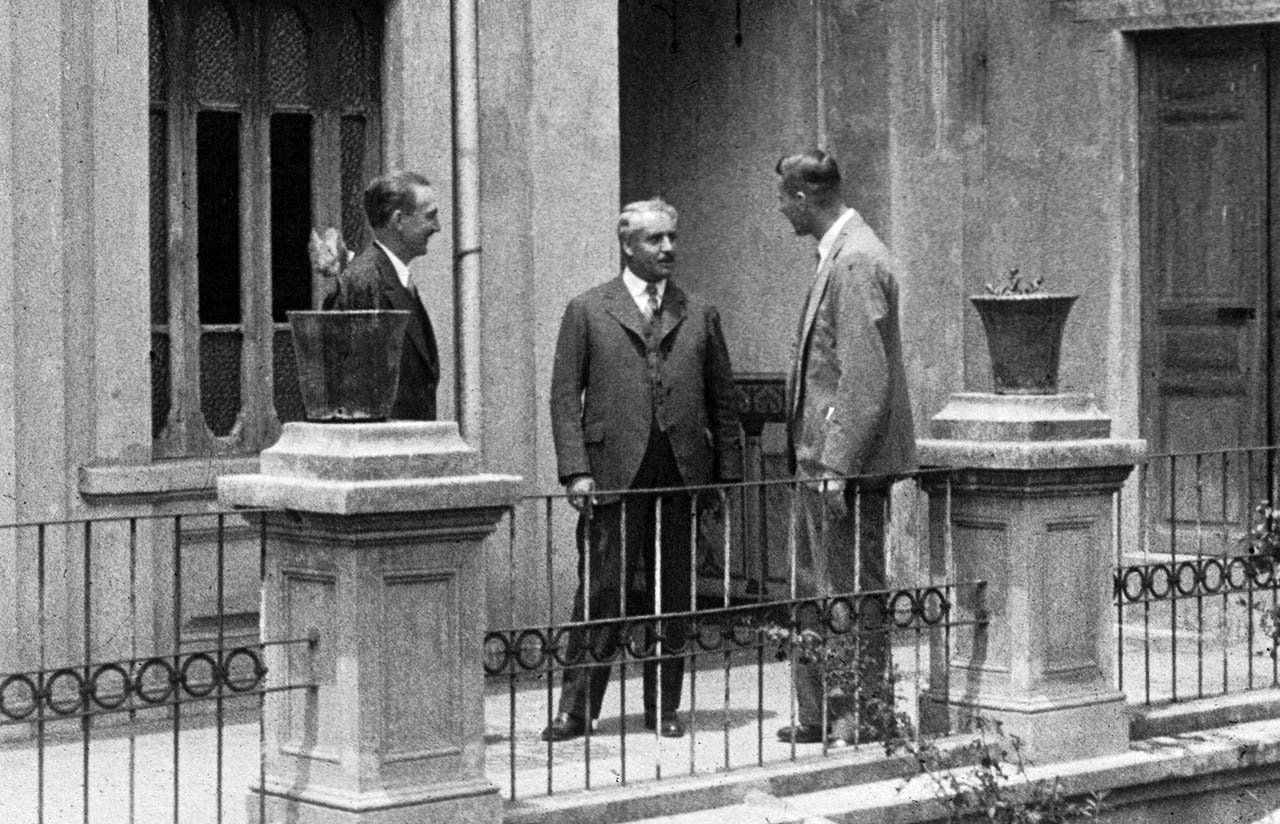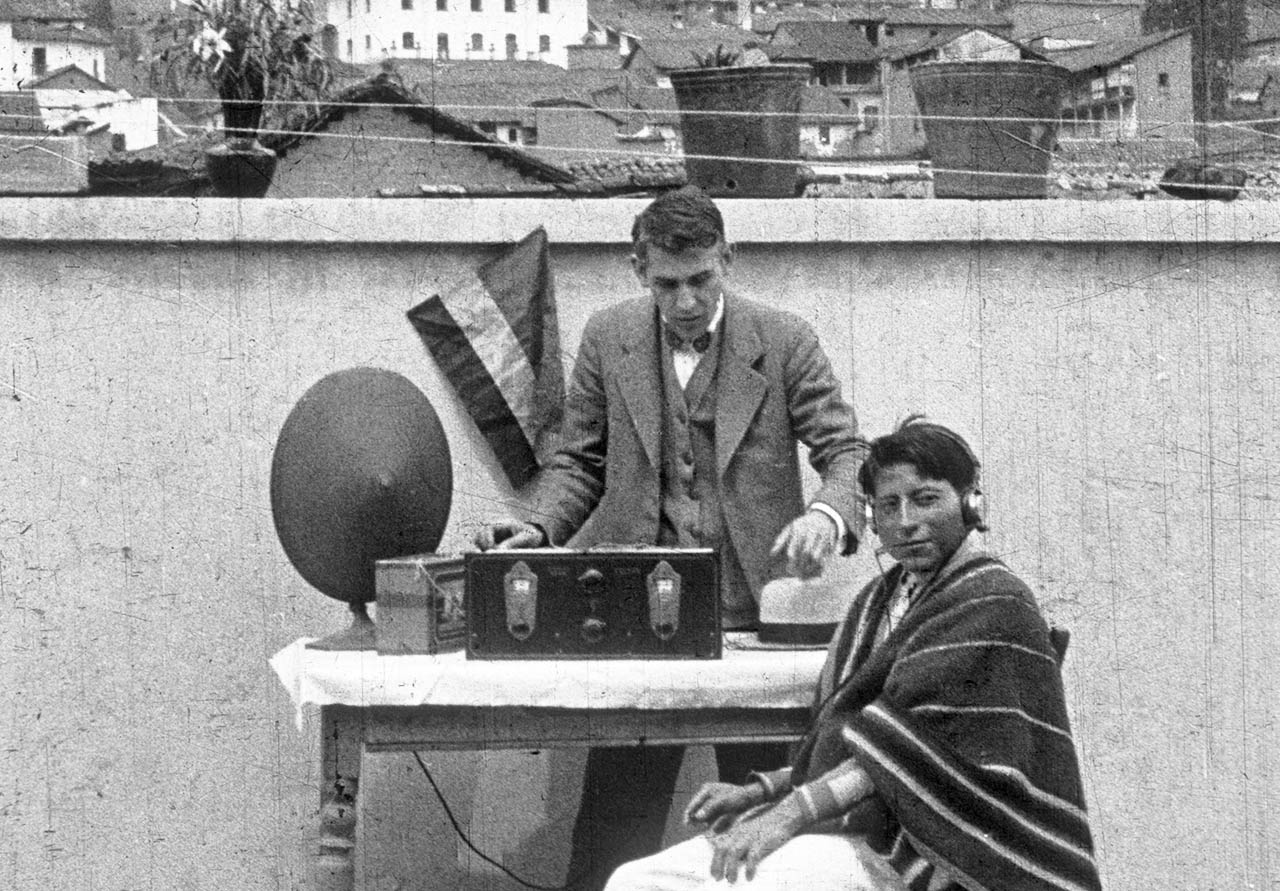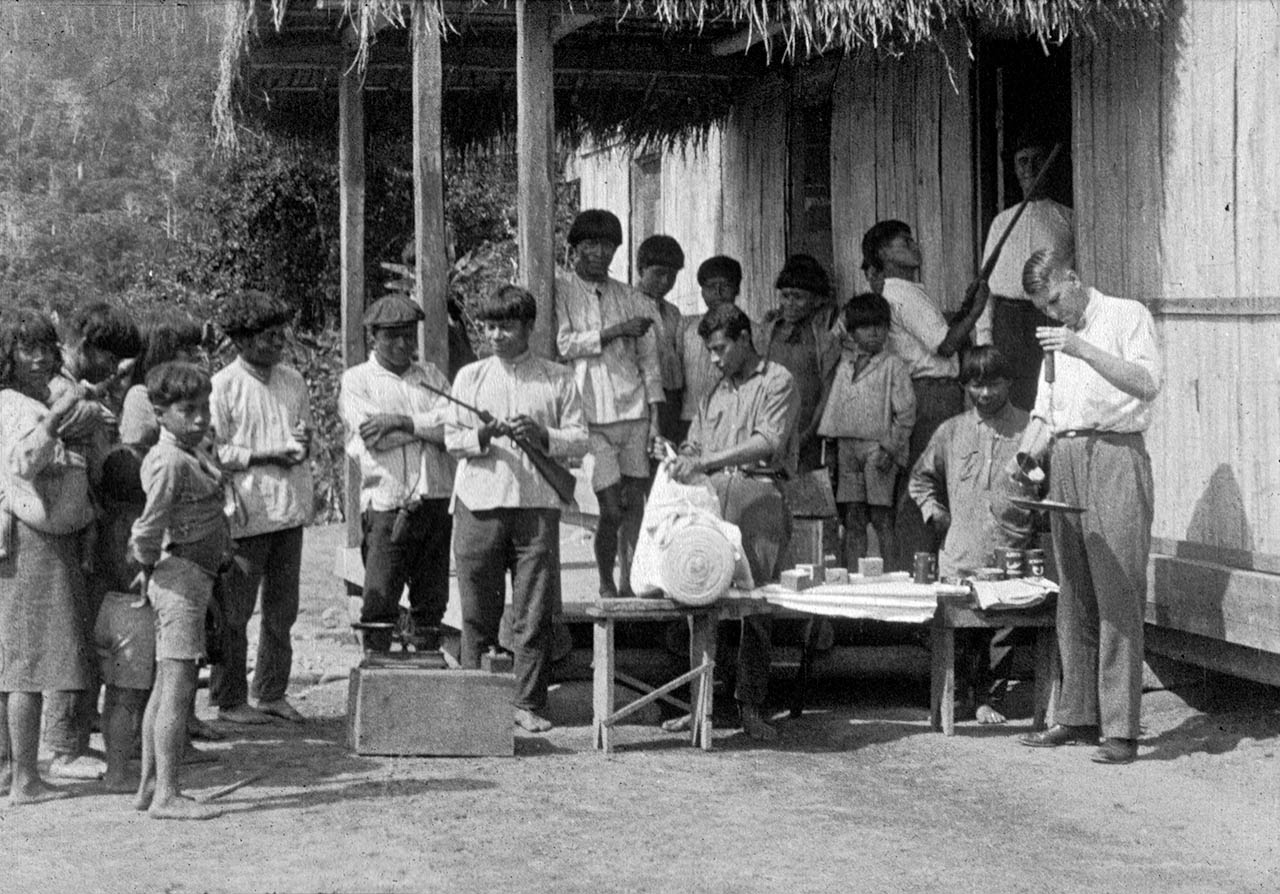Through a series of “chance encounters” around the U.S. during 1929 and 1930, Clarence and his wife Katherine met several missionaries who were working in Ecuador. The first were John and Ruth Clark who had moved into the same apartment building where the Jones lived in Chicago. Clarence and Katherine would later meet Reuben and Grace Larson, as well as Paul and Bernice Young, who were all missionaries with the Christian and Missionary Alliance (C&MA).
These missionaries encouraged Clarence to try to start his radio station in Ecuador, and committed to help him found the station.
In Ecuador, the director of the C&MA, Stuart Clark and his wife Erma also enthusiastically joined the effort.
(All four of these missionary couples would have an active part in HCJB’s Gospel radio broadcasts from the very beginning. The Larsons and both Clark families would eventually join Radio Station HCJB full-time.)
 |
Stuart Clark, Reuben Larson and Luis Calisto, a very influential and well-connected Ecuadorian lawyer, then set about the task of getting government permission for the evangelical and cultural radio station. This was not a simple task as there were no radio stations in Ecuador and the government had not yet established any laws governing radio.
With God's help, the proposed contract gathered signatures and seals of approval as it traveled all the way to President Isidro Ayora’s office. However President Ayora was reluctant to approve the contract for a Protestant radio station and so he sent it back unsigned.
The Deputy Secretary for Public Education and Wireless Communications in Ecuador was Dr. Carlos Andrade Marín, who was enthusiastic about the possibility of Ecuador’s first radio station. Undaunted, Dr. Carlos Andrade Marín placed the proposed contract back on top of the documents to be sent to the president to sign. This continued several times until the president finally signed the document. Ecuador’s congress then ratified the contract in August of 1930.
Meanwhile Clarence Jones was finding it difficult to raise funds for the station, since the United States was in the midst of the Great Depression.
Clarence traveled to Ecuador in October of 1930 to finalize documents and find a location for the station. Clarence had no sooner gotten off the boat when he met commercial radio experts who described Ecuador as being a radio desert. As far as it could be determined, there were only 5 or 6 radio receivers in the entire country. The radio experts told Clarence if he wanted to do radio in the region, he should stay away from the equator, stay away from the mountains and forget Ecuador altogether. Discouraged, Clarence called out to God and he heard Him say, “Come up to this mountain.”
By worldly wisdom, the whole radio station project seemed to be complete foolishness. Yet Clarence was learning to be obedient as he called out to God for wisdom, and God was faithful to show him “great and mighty things.”
So Clarence decided he would trust God over the radio experts and start the radio station in the capital city of Quito, located at 9200 feet, along the Equator and surrounded by the Andes Mountains.
A Radio Desert
 |
Radio was virtually non-existent in Ecuador in 1930. As far as it could be determined, there were only 5 or 6 radio receivers in the entire country. So Clarence Jones arranged for the Reed brothers to import and distribute radios through their stores in Quito and Guayaquil. Jones also sold radios personally through his “Quito Radio Agency”.
HCJB and the Silver Screen
 |
While Clarence Jones was visiting Ecuador in 1930, he used a borrowed movie camera to make what was perhaps the world’s very first missionary film. The movie introduced the diverse people, customs and landscapes of Ecuador, as well as the proposed pioneer missionary radio station to audiences across the United States.
The film also introduced the future radio station’s call letters and slogan:
HCJB - Heralding Christ Jesus Blessings.
Spanish - Hoy Cristo Jesus Bendice (Today Christ Jesus Blesses)
Jungle Pioneers
 |
Sharing the Gospel in the jungle was difficult for CM&A missionaries Reuben and Grace Larson since the Quichua Indians in the area hid from them. Reuben decided that building a trading post at Dos Rios could bring people right to his doorstep. They also traded matches, machetes and various trinkets for food for their family. As the Larson’s reputation for honesty grew, they bought gold, distributed salt and delivered mail for the Ecuadorian government. Reuben also oversaw the maintenance of trails in the area and the local schools.
Reuben and Grace were integral in the founding and programming of Radio Station HCJB in the early years. The Larsons joined the mission full-time in 1937, where Reuben would serve as co-director with Clarence Jones and also serve as president.
Next: 1931 - The World Radio Missionary Fellowship, Inc.
